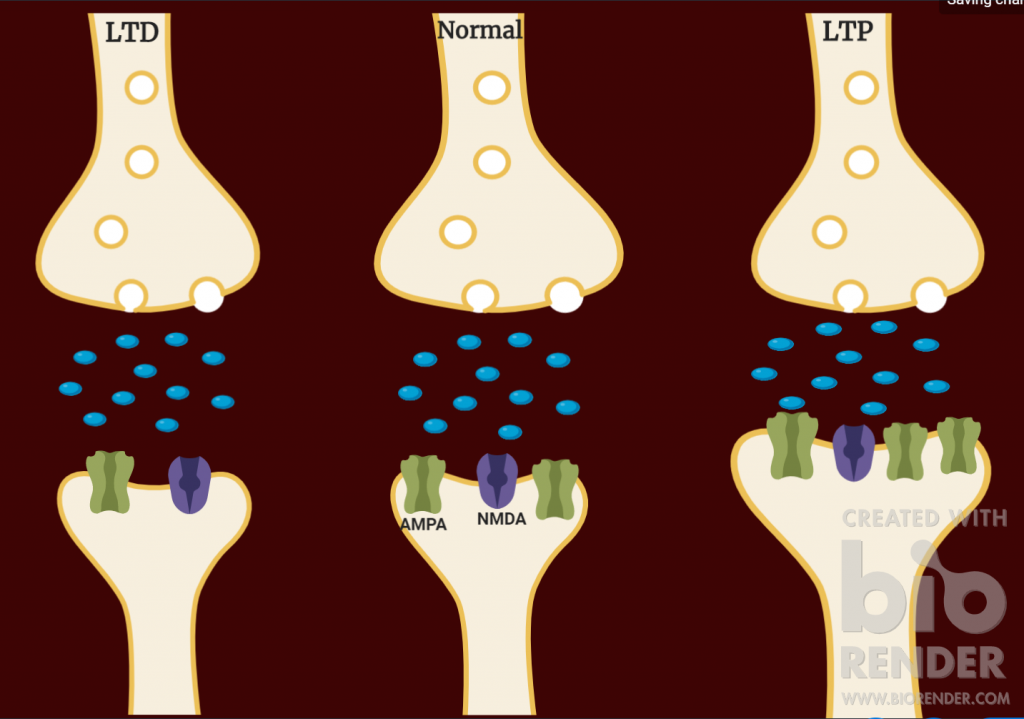29 2.2 Long Term Potentiation
Long Term Potentiation and Memory

You can not talk about Alzheimer’s Disease (AD) without mentioning Long Term Potentiation (LTP) and memory. LTP is based on the principle that with repeated stimulation of pre- and post- synaptic neurons, the efficiency of synaptic transmission is increased. The strengthened synapse between two neurons is what many psychologists refer to as memory. LTP formation requires a signal, typically Glutamate from presynaptic neurons, to activate AMPA receptors on the postsynaptic membrane to depolarize the neuron. This depolarization causes NMDA receptors to open, leading to an influx of Calcium ions resulting in cellular changes in the postsynaptic neuron. The postsynaptic neuron is observed to have the growth of new dendritic spines, an enlargement of existing spines and a recruitment of intracellular AMPA receptors which culminate to sensitize and provide a larger response the next time a signal is sent (Cobar et. al).
The opposite to LTP is Long-Term Depression (LTD) occurring after repeated low frequency stimulation. The cellular effects of LTD are the endocytosis of surface AMPA receptors, weakening the synaptic strength and the association of the pre- and post- synaptic neurons (Connor and Nguyen, Beattie et. al). Beyond LTP and LTD there is another factor associated with memory called the miniature Excitatory Postsynaptic Currents (mEPSCs). These are vesicles released by the presynaptic neuron filled with Glutamate, however, the amount in the vesicles by itself is not enough to trigger an action potential and are released seemingly randomly. Although, with a high enough frequency and amplitude of mEPSCs, they provide an additive effect to sensitize the postsynaptic neuron and strengthen the synaptic transmission. On the other hand, if there is a low frequency or amplitude of the mEPSCs, the postsynaptic neuron is not as primed, causing the next synapse to be harder to fire and thus inhibiting memory formation (Yang et. Al).
Key Takeaways
- The addition or removal of the AMPA receptor underlies the synaptic strength and formation of memory.
- mEPSCs can either prime or depress the postsynaptic membrane.
